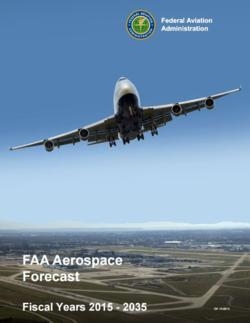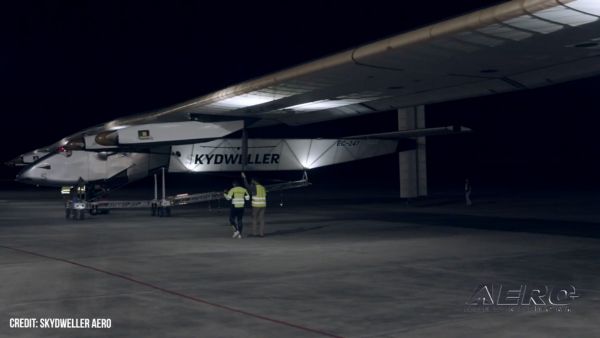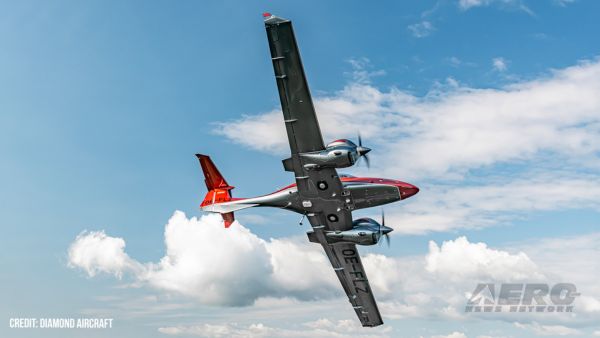Fri, Mar 20, 2015
Agency, Industry Priorities In Place To Meet Demand
The FAA has released its annual aviation forecast that shows the nation’s aviation system will continue to grow over the next two decades with greater numbers of people expected to fly more miles each year.

“The improving economy continues to bode well for the health of the U.S air transportation system,” said FAA Administrator Michael Huerta. “The FAA and industry are continuing to deploy NextGen technologies and procedures to ensure that the nation’s aviation system can safely and efficiently meet our growing airspace demands.”
Revenue Passenger Miles (RPMs) are the aviation standard for measuring air travel volume. An RPM represents one paying passenger traveling one mile. The FAA Aerospace Forecast Fiscal Years 2015 to 2035 projects RPM growth for U.S. air carriers to average 2.5 percent per year over the 20-year forecast.
Load Factor is a term that represents the average percentage of seats filled in commercial passenger aircraft. The report concluded that U.S. air carrier Load Factors were an estimated 83.4 percent in 2014. Load Factors are projected to grow to 84.2 percent by 2035.
U.S. airlines served an estimated 756.3 million passengers in 2014, up by 2.3 percent from the 2013 level. The FAA forecast projects passenger growth to average 2.0 percent per year, reaching one billion passengers in 2029, and 1.14 billion by 2035.
To help the FAA and the aerospace system better prepare for the forecast growth and future changes, the FAA and industry are working together to implement the NextGen air traffic modernization plan. To further expedite this effort, late last year the FAA and industry unveiled the NextGen Priorities Joint Implementation Plan. Under the plan, the agency and industry share responsibility to meet specific milestones, locations, timelines and metrics for “high priority, high readiness” NextGen initiatives. These initiatives include Multiple Runway Operations; Performance Based Navigation using satellites to move aircraft more quickly from point “A” to point “B;” and improved Surface and Data Communications.
Other important data that illustrates the growing demands on our nation’s airspace system is air cargo traffic. As measured by Revenue Ton Miles (RTMs) – one ton of cargo flown one mile – is expected grow to 72.6 billion by 2035 at an average annual growth rate of 3.6 percent during the forecast period. In addition, landings and take-offs at FAA-operated towered airports and FAA-contracted towered airports are expected to increase from an estimated 49.6 million operations in 2014 to 59.9 million operations in 2035, an average rate of 0.9 percent per year.
More News
The Industry Continues to be Rocked By Some Questionable Operations Recent investigations and a great deal of data has resulted in ANN’s SportPlane Resource Guide’s rep>[...]
Make Sure You NEVER Miss A New Story From Aero-News Network Do you ever feel like you never see posts from a certain person or page on Facebook or Instagram? Here’s how you c>[...]
Visual Approach Slope Indicator (VASI) An airport lighting facility providing vertical visual approach slope guidance to aircraft during approach to landing by radiating a directio>[...]
Airport Marking Aids Markings used on runway and taxiway surfaces to identify a specific runway, a runway threshold, a centerline, a hold line, etc. A runway should be marked in ac>[...]
Aero Linx: The Skyhawk Association The Skyhawk Association is a non-profit organization founded by former Skyhawk Pilots which is open to anyone with an affinity for the A-4 Skyhaw>[...]
 Unfortunate... ANN/SportPlane Resource Guide Adds To Cautionary Advisories
Unfortunate... ANN/SportPlane Resource Guide Adds To Cautionary Advisories ANN FAQ: Turn On Post Notifications
ANN FAQ: Turn On Post Notifications ANN's Daily Aero-Term (04.29.24): Visual Approach Slope Indicator (VASI)
ANN's Daily Aero-Term (04.29.24): Visual Approach Slope Indicator (VASI) ANN's Daily Aero-Term (04.28.24): Airport Marking Aids
ANN's Daily Aero-Term (04.28.24): Airport Marking Aids ANN's Daily Aero-Linx (04.28.24)
ANN's Daily Aero-Linx (04.28.24)



